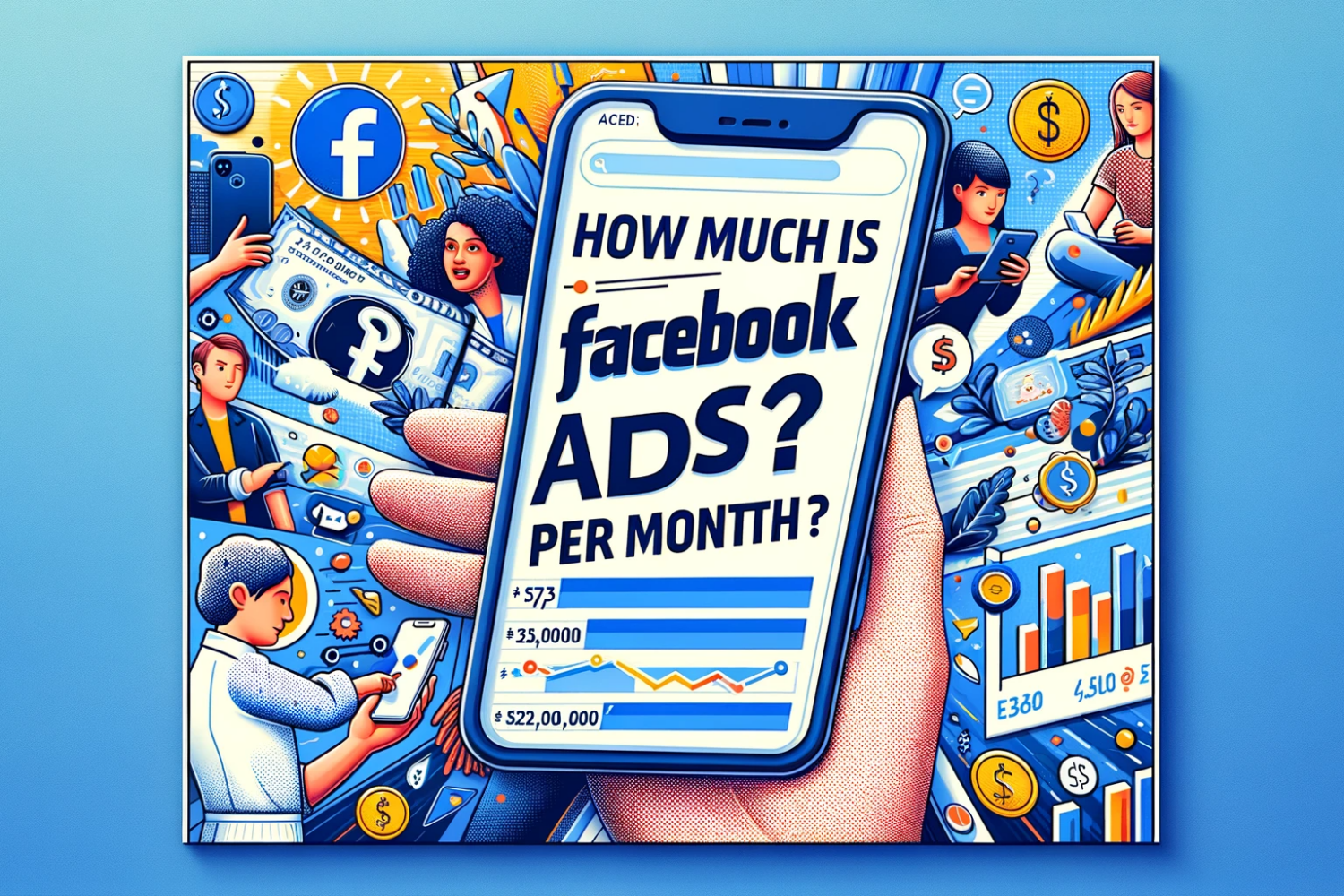In the ever-evolving world of digital marketing, understanding How Much Is Facebook Ads Per Month? is crucial for businesses aiming to maximize their online presence. As a leading digital marketing agency delves deep into the nuances of Facebook advertising to bring clarity to this subject.
How Does the Facebook Ad Auction Work?
The Facebook ad auction is a complex system where advertisers bid for ad spaces. It’s not just about the highest bidder winning; relevance and engagement play a significant role.
What Determines Facebook Advertising Costs?
Several factors, including audience demographics, ad quality, and competition, determine the costs of Facebook advertising. Navigating these factors requires expertise and strategic planning.
Are Facebook Advertising Costs Worth the Price?
Investing in Facebook ads can yield substantial returns, especially when strategies are tailored to your specific audience and objectives. Ergasti Digital ensures that every penny spent is an investment towards achieving your business goals.
Get Better Results from Your Facebook Ads
Optimizing ad creatives, targeting the right audience, understanding How Much Is Facebook Ads Per Month, and continuous testing are key to getting better results from your Facebook ads.
How Much Is Facebook Ads Per Month?
The cost of Facebook ads varies widely depending on numerous factors. Businesses can expect to spend anywhere from a few hundred to several thousand dollars per month, depending on their campaign goals and target audience.
Here’s a breakdown of factors that influence the monthly cost of Facebook ads:
- Advertising Goals: Costs can vary depending on what your clients want to achieve – whether it’s brand awareness, lead generation, website traffic, or sales. Objectives that require more complex user actions, like purchasing a product, typically cost more.
- Target Audience: The audience’s size and competition for that segment can significantly impact costs. Targeting a highly sought-after audience in a competitive market typically requires a higher budget.
- Bid Strategy: Whether you opt for manual or automatic bidding and the specific type of bid (e.g., cost per click, cost per impression) can influence costs.
- Ad Quality and Relevance: Higher quality and more relevant ads can lead to lower costs due to better engagement and performance.
- Industry: Some industries have higher advertising costs due to high competition. The industry your client operates in will impact the budget needed for effective advertising.
- Ad Placement: Ads placed in high-visibility areas like the Facebook News Feed or Instagram Stories might cost more than those placed in less prominent locations.
- Geographical Location: Targeting urban areas or regions with high Facebook usage might incur higher costs compared to rural or less digitally-engaged areas.
- Time of Year: Advertising during peak periods, such as holidays or major sale events, can be more expensive due to increased competition.
Given these variables, the monthly cost for Facebook ads can range from a few hundred to several thousand dollars. For small to medium-sized businesses, a common starting point might be between $500 to $1500 per month. However, larger businesses or more aggressive campaigns in competitive industries might require a significantly higher budget.
How Do I Purchase Ads?
Purchasing Facebook ads involves setting up an ad account, defining your target audience, and allocating a budget that aligns with your marketing objectives.
Submit Your Ad to the Facebook Ad Auction
After creating your ad, it’s submitted to the Facebook ad auction, where it competes with other ads to secure a spot in your target audience’s feed.
Get Precise Control Over Your Campaign Costs
Facebook offers tools to manage your ad spend effectively, ensuring that you stay within budget while achieving desired results.
How Does Facebook Ad Pricing Work?
Ad pricing on Facebook is determined by a combination of factors, including bid amount, ad quality, and estimated action rates.
11 Factors That Affect Facebook Ad Cost:
Facebook ad costs are influenced by a variety of factors. Understanding these can help you optimize your campaigns for better performance and cost-efficiency. Here are 11 key factors that affect the cost of Facebook ads:
- Target Audience: The demographics, interests, and behaviors of your target audience can significantly impact cost. Competitive audiences often result in higher costs.
- Ad Quality and Relevance: Facebook rewards ads that are highly relevant to the audience with lower costs. High-quality ads with engaging content, clear messaging, and strong call-to-action usually perform better.
- Bidding Strategy and Budget: Your choice of bid strategy (cost-per-click, cost-per-impression, etc.) and your budget can influence the cost. A higher budget and competitive bidding can drive up costs.
- Ad Placement: Costs can vary based on where your ad is shown (Facebook News Feed, Instagram, Audience Network, etc.). Some placements are more expensive due to higher engagement or competition.
- Time of Year: Advertising costs can fluctuate during certain times of the year, like holidays or major shopping seasons, due to increased competition for ad space.
- Ad Objective: The goal of your ad (brand awareness, traffic, conversions, etc.) can affect the cost. Objectives that involve deeper funnel actions like conversions may cost more.
- Frequency: The frequency of your ad refers to how often it’s shown to the same user. A higher frequency can lead to ad fatigue and increased costs.
- Industry: Different industries have varying levels of competition and audience availability, influencing ad costs. For example, finance and insurance tend to have higher costs.
- Geographical Location: Targeting users in specific locations can affect costs. High-demand areas or countries with more competition can have higher advertising costs.
- Ad Schedule: Running ads on specific days or hours can influence costs, as competition and audience availability vary throughout the week.
- Seasonality and Market Trends: General market trends and seasonal factors can impact ad costs. For instance, advertising during an economic downturn might be cheaper due to reduced competition.
Become a Better Social Marketer
Enhancing your knowledge and skills in Facebook advertising is key to becoming a better social marketer. Regularly updating your strategies in line with the latest trends and best practices is essential.
How to Reduce Your Facebook Ad Cost
Reducing Facebook ad costs can be achieved through better targeting, optimizing ad creatives, and testing different ad formats.
The Cost of Facebook Ads Is Always Changing
The dynamic nature of Facebook’s advertising platform means that costs are continually fluctuating. Staying informed and adaptable is crucial.
Average Facebook Ads CPC, CR & CPA by Industry
Cost-per-click (CPC), conversion rates (CR), and cost-per-acquisition (CPA) vary significantly across different industries. Understanding these metrics helps in creating more efficient campaigns.
Facebook Business Advertising Cost Trends
Observing trends in Facebook advertising costs can provide insights into market changes and help you adjust your strategies accordingly.
What Is a Good ROAS for Facebook Ads?
A good Return on Ad Spend (ROAS) depends on your industry and business goals. However, a ROAS of 4:1 is generally considered effective.
How to Improve Your Return on Facebook Ads
Improving your ROAS involves refining targeting, enhancing ad creatives, and constantly testing different campaign strategies.
Is $100 Enough for Facebook Ads?
While $100 can be a starting point for small campaigns, the effectiveness depends on your specific goals and the competition in your industry.
How Do Facebook Ads Compare to Other Ad Types and Social Ads?
Facebook ads offer unique targeting capabilities and a vast user base. For a more comprehensive comparison, check out our blog on “Are TikTok Ads Better Than Facebook?”.
How to Tell If Facebook Ads Are a Good Investment for Your Business
Here’s how you can evaluate the effectiveness of Facebook ads for your business:
- Define Clear Objectives: Establish what your clients want to achieve with their Facebook ads. This could be increasing brand awareness, generating leads, driving website traffic, or boosting sales. Clear objectives help in measuring success.
- Understand Your Target Audience: Analyze if your client’s target audience is active on Facebook. Consider demographics, interests, and online behavior. Facebook’s extensive targeting options can be highly effective if the audience aligns well with the platform.
- Analyze Competitor Performance: Look at how competitors are using Facebook ads. If they are investing significantly and seeing good results, it’s likely a viable channel for your clients as well.
- Track Key Performance Indicators (KPIs): Monitor metrics like click-through rate (CTR), conversion rate, cost per click (CPC), cost per acquisition (CPA), and overall ROI. These indicators will help assess the effectiveness of your campaigns.
- Test and Optimize: Run small-scale test campaigns to gauge performance. Use A/B testing to refine ad copy, targeting, and creative elements. Optimization is key to improving ROI.
- Consider Budget and Resources: Evaluate if your clients have the budget to compete effectively on Facebook. Also, consider the resources needed for creating high-quality content and managing campaigns.
- Look at the Sales Funnel: Determine how Facebook ads fit into your client’s overall sales funnel. Are the ads driving the desired action at each funnel stage?
- Assess Engagement Levels: High engagement (likes, shares, comments) can be a good indicator of ad resonance with the audience. It also boosts organic reach.
- Lifetime Value (LTV) of Acquired Customers: Calculate the LTV of customers acquired through Facebook ads. A high LTV compared to the acquisition cost is a good sign of a profitable investment.
- Market Trends and Consumer Behavior: Understand the trends in digital marketing and consumer behavior in Egypt. If there’s a growing trend of online shopping and social media usage, Facebook ads might be more effective.
- Feedback and Brand Sentiment: Monitor customer feedback and sentiment towards your brand on Facebook. Positive sentiment can be an indirect indicator of successful advertising.
The Takeaway
Understanding How Much Is Facebook Ads Per Month is a journey of continuous learning and adaptation. With the right approach, the investment can yield significant returns.

